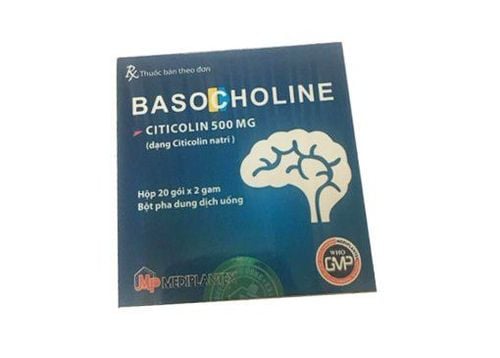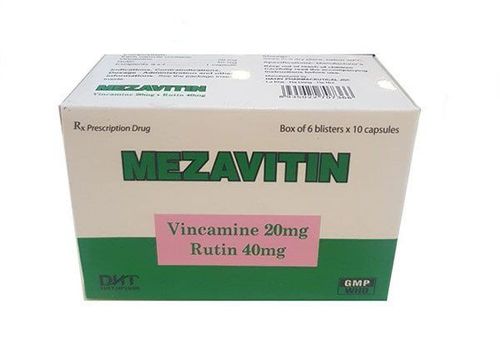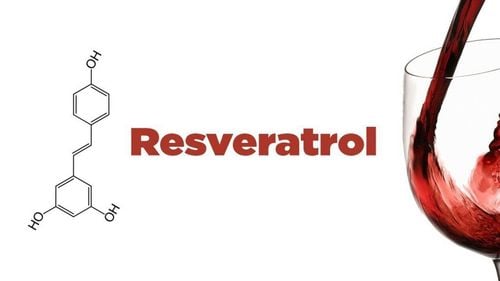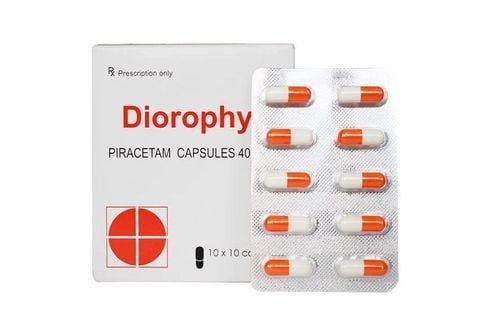This is an automatically translated article.
Brain atrophy is a decrease in the number of brain cells or loss of connectivity between brain cells. People with brain atrophy often progress to impaired cognitive function as well as memory impairment, depending on whether the area of brain atrophy is focal or total. Either way, brain atrophy and memory loss are a result of the natural aging process.
1. What is cerebral atrophy?
Brain atrophy is the gradual loss of brain cells over time. This condition can occur in the whole brain or only part of the brain and can lead to decreased brain volume along with loss of neurological function, including memory impairment. The symptoms of microcephaly depend on the cause and location of brain cell death.
Brain atrophy can occur due to brain injury (stroke) or neurological disease (Alzheimer's, cerebral palsy, Huntington's disease). Brain infections can also lead to brain cell death and brain atrophy.
Symptoms of brain atrophy include memory loss, dementia, seizures, loss of motor control, and difficulty speaking. Dementia is manifested by memory loss and inability to perform daily activities, which can be mild or severe. Seizures can range from absence seizures (sudden loss of response) to generalized convulsive seizures.
Depending on the underlying cause, brain atrophy can progress very slowly or very quickly. However, this pathology is an obsession of old age and currently has no cure. Current treatment of microcephaly is focused on treating the symptoms and complications of the disease. In the case of brain atrophy caused by an infection, treating the infection can prevent the symptoms of brain atrophy from getting worse.
Trắc nghiệm xem trí nhớ của bạn tốt đến đâu
Trí nhớ của con người luôn là một đề tài thú vị và nhận được sự quan tâm của nhiều người. Liệu trí nhớ có bị mai một hay thay đổi theo thời gian hay không. Để xem trí nhớ của bạn tốt đến đâu, hãy cùng trả lời 14 câu trắc nghiệm dưới đây.
Bài dịch từ: webmd.com
2. How does cerebral atrophy manifest?
Symptoms of microcephaly can be general (affecting the entire brain) or focal (affecting only part of the brain or a certain function). Brain atrophy and memory impairment are often linked, with focal symptoms including seizures and problems with speech, vision, or movement.
2.1. General symptoms of microcephaly The general symptoms of microcephaly arise from the loss of brain cells throughout the brain. Patients may experience symptoms of brain atrophy daily or only occasionally. Sometimes, any of these symptoms can be serious:
Mood, psychological or behavioral changes. Difficulty making judgments or thinking abstractly. Reduced ability to remember and think. Language disturbances such as difficulty speaking, understanding, writing, or reading. Disorientation. Learning disabilities. 2.2. Local symptoms of brain atrophy If brain atrophy causes loss of brain cells in a specific area of the brain, the person may have local symptoms including:
Blurred or double vision. Difficulty speaking or understanding voice (aphasia). Impaired ability to self-regulate or coordinate movement. Local weakness, loss of sensation or paralysis. 2.3. Severe symptoms of brain atrophy In some cases, brain atrophy can be life-threatening. Therefore, call 911 immediately if any of the following sudden life-threatening symptoms occur:
Danger to self or others, including threatening behavior or suicide . Consciousness or loss of consciousness. Convulsions. Changing markets, loss of vision.

3. What causes brain atrophy and memory loss?
Brain atrophy and memory impairment can arise from many brain diseases, traumatic brain injury or brain infection.
Traumatic causes include:
Stroke. Traumatic brain injury . Diseases such as:
Alzheimer's disease. Cerebral Palsy: A group of disorders that affect movement, balance, and posture. Dementia. Huntington's disease: An inherited cause of brain cell degeneration. Leukemic dystrophy: The disease damages the protective layer of material around nerve cells. Multiple Sclerosis: A disease that affects the brain and spinal cord causing weakness, coordination, balance problems, and other problems. Pick's disease: This form of dementia affects only certain regions of the brain. Infectious causes include:
AIDS . Encephalitis: Inflammation and swelling of the brain due to viral infections or other causes. Syphilis: A sexually transmitted disease caused by bacteria.
4. What are the risk factors for microcephaly and dementia?
Several factors increase the risk of microcephaly. However, not all people with these risk factors will develop brain atrophy. Risk factors for brain atrophy and memory impairment include:
Older age. Brain damaged. Family history of Alzheimer's disease, Huntington's disease, or similar neurological disorders. Family history of autoimmune disorders such as multiple sclerosis. Head injury. Although microcephaly is not preventable, a healthy lifestyle can hold promise to help slow the progression of microcephaly and reduce the severity of symptoms, such as:
Controlling blood pressure. Eat a healthy, balanced diet that includes omega-3 fatty acids and antioxidant fruits and vegetables. Actively participate in mental, physical and social activities.
5. How is brain atrophy treated?
To date, there is no cure for cerebral atrophy. Once brain cells are lost, the neurological defects left behind are permanent. Therefore, the treatment of microcephaly focuses on the symptoms and complications of the disease. Specifically:
Treatment of dementia and symptoms of loss of function:
Drugs that change the amount of chemicals that control brain signals or treat symptoms of cognitive decline, sometimes used in Alzheimer's disease . Physical therapy to improve function and ability to perform daily activities. Counseling and psychological support. Treatment of other symptoms of microcephaly:
Use anticonvulsants to prevent or reduce the frequency or severity of seizures. Cognitive or behavioral therapy to improve quality of life. Physical therapy to slow loss of muscle control. Speech therapy to reduce the effects of aphasia (impaired ability to speak and understand). Treat the underlying infection or injury that leads to brain atrophy. Supportive measures:
The best way to improve symptoms of microcephaly or slow the progression of microcephaly is to lead a healthy, active lifestyle. Have a balanced diet rich in antioxidant fruits and vegetables. Actively exercise regularly. Increase mental activity. Complementary treatments:
Complementary treatments can help some patients in their efforts to cope with brain atrophy. Although there is no research on the effectiveness of these treatments, they may be beneficial in certain populations, including: Acupuncture, massage therapy, nutritional supplements. nutrition and natural herbs, yoga,

6. What are the potential complications of microcephaly?
Complications of untreated or poorly controlled brain atrophy can be serious, even life-threatening in some cases, including:
Inability to participate normally in activities. Loss of independence. Depression or boredom. In a nutshell, brain atrophy is the loss of nerve cells in the brain or the loss of connections between neurons. If the damage is small and mild, brain atrophy may not significantly affect daily activities. However, brain atrophy can sometimes lead to symptoms such as seizures, aphasia, and memory impairment, which can be life-threatening. Therefore, patients should seek medical attention early if there are any symptoms of cerebral atrophy. The doctor will conduct a diagnosis of the cause of brain atrophy and give an aggressive treatment from the beginning.
To protect health and prevent complications, when detecting symptoms of memory loss, the patient needs to go to the hospital to be examined by a neurologist. Currently, Vinmec International General Hospital is one of the most prestigious medical treatment units for neurological diseases in Vietnam. The Department of Neurology at Vinmec has the function of examining, diagnosing, consulting and treating diseases related to neurological factors, including headaches, vestibular syndrome, cerebellar syndrome, dementia The typical method of the department is to use intravenous and arterial fibrinolytic drugs for stroke cases, along with the combination with paraclinical means such as electroencephalography, electromyography. ST Scan, MRI,...
Neurological examination at Vinmec, customers will be:
Examination by a team of highly qualified and experienced experts such as: Doctor Nguyen Thi Minh Phuong , Doctor Bui Ngoc Phuong Hoa, Doctor Vu Duy Dung ... State-of-the-art equipment, comparable to major hospitals in the world: The most modern operating room in the world; The most modern silent magnetic resonance imaging machine in Southeast Asia; The 16-sequence PET/CT and SPECT/CT systems help in early detection of neurological damage even when there are no symptoms of the disease. Apply the most advanced intensive treatment techniques in the world in treatment.
Please dial HOTLINE for more information or register for an appointment HERE. Download MyVinmec app to make appointments faster and to manage your bookings easily.













